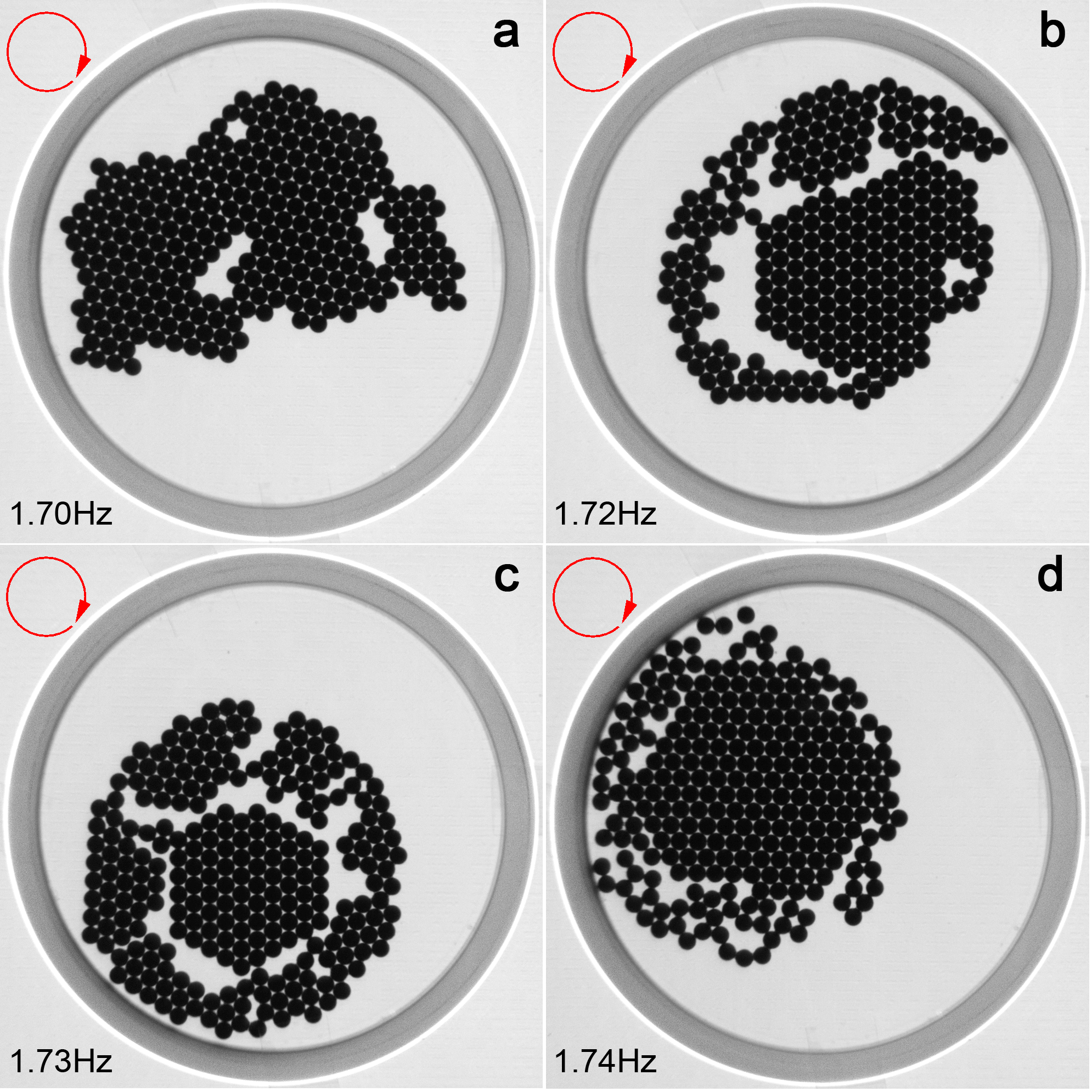
Melting of cohesive glass spheres under swirling (i.e., the motion to stir up the bouquet of a glass of wine)
|
Considering granular
particles as molecules and capillary bridges between adjacent particles
as molecular bonds, we may use partially wet granular matter as a model
system to investigate phase transitions far from thermodynamic
equilibrium, as continuous driving is needed to compensate the energy
dissipation in the system.
Here is a simple toy
experiment one can play at home: Placing a number of small glass balls
in a plate, wet them with a small amount of water, and agitate them by
swirling (as what you do to mix stuff while cooking). You will observe
crystallization, creation of defects, amorphous, and eventually melting
from the free surface, depending on how strong you drive the system. It
is a simple experiment that leads to rich collective behavior.
Our goal is to find out: What is unversal for both equilibrium and nonequilibrium systems, and what is specific?
- The first investigation showed a universal aspect of surface melting and how it happens in this model system.
- The second work showed an aspect that is specific to
nonequilibrium system; that is, 1/f noise, which can be used to detect
the melting transition.
- The third work showed that melting may also start
from the topological defects inside the crystal, if the system is not
strickly monolayer.
- The next step is to quantify whether the defects mediated melting fit into the Kosterlitz-Thouless (Nobel Prize for Physics in 2016) melting scenario or not.
|
![]() German
German ![]() German
German